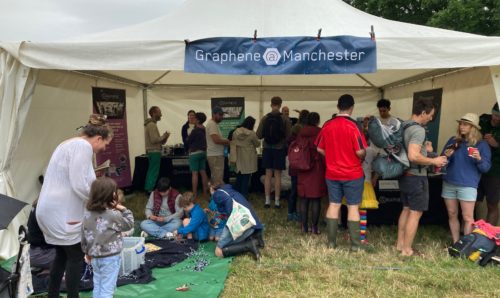Brave new world? Graphene-based matrices in biomedical scaffolding
Research 13th February 2019
While we may not even be aware of it, graphene is everywhere around us. From the carbon nanotubes embedded in the soles of our fancy new trainers to sophisticated body sensors, from high-tech electronics to skiing equipment. With this 2D wonder material creeping into virtually every niche of our 3D daily lives, we might ask ourselves the question: Is there any challenge graphene is not cut out for?
Judging from the exciting research of Kostas Kostarelos’s team at the Nanomedicine Lab and the National Graphene Institute at The University of Manchester, biomedical applications are certainly not one of graphene’s limitations. The team are currently studying the potential of graphene oxides and similar graphene-based materials for the growth of human and other mammalian cells.
According to ongoing investigations for both stem cell research and tissue engineering conducted by research groups around the globe, graphene-based substrates could provide a less expensive and more tuneable alternative to conventional cell growth supports. Depending on the properties of the graphene-based material, the substrate can promote wound healing, enhance cell growth and control growth stimuli for electroactive neuron-like cells.
The recent studies by Jasim and Kostarelos further indicated that the outstanding mechanical strength and simple structure of graphene-based materials indeed can act as a scaffold for anchorage-dependent cells, while simultaneously providing high substrate flexibility and biodegradability.
In order to test the actual feasibility of graphene-based substrates for cell growth and biomedical research, they fabricated oxidised graphene and graphite papers made from starting materials of various dimensions. All substrates were then pre-characterised and subsequently used as scaffolds for the growth of human lung and neuron-like cells.
In particular, the researchers studied the effects of the substrates’ dimensions on cell growth. Following their experimental routine, they examined large and small graphene oxide sheets (with a thickness equivalent to the length of average E. coli bacteria) in contrast to a factor ten thicker graphite oxide papers (about as thick as a wool fibre). All gathered results were in turn compared with a reference of normal tissue culture substrates. In doing so, they meticulously assessed how well the cells stuck to the substrate and were able grow into a larger cluster.
Their findings indicate that while thick graphite oxide and large, thin graphene oxide samples appeared to be significantly rougher than the small graphene oxide and the control sample, the cell coverage with human lung cells was comparable for all substrate types.
Furthermore, microscopy images clearly demonstrated that both lung and neuron-like cells adhere well to the substrates and proliferate successfully into large cell clusters covering roughly three fourth of the substrate surface.
In a subsequent study of the magnitude of harmful effects on cell health, human lung cells cultured on large graphene-based substrates even showed significantly improved cell viability, as cells were healthier compared to those grown on standard glass or plastic supports.
This advantage in biocompatibility over conventional tissue culture substrates makes graphene-based materials an exciting competitor in biomedical substrate research. Moreover, it warrants further studies on how to further improve graphene-based materials and tweak the properties of mammalian cell growth supports.
Concluding from these results, we’re not even close to the limits of graphene applications yet.
Researchers already envision nano-bionic devices, supercapacitors and molecular storage tools based on graphene. Whatever the future of graphene research may hold, this material seems to be just unfolding its full potential.
The article: “Graphene-based papers as substrates for cell growth: Characterisation and impact on mammalian cells” (DOI: 10.1016/j.flatc.2018.11.006) can be found here.
Words by Julia Tesch.




